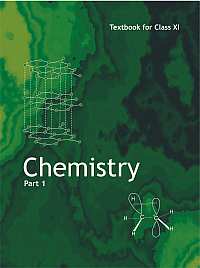C-SAT Sample Test Paper- 4
English Language Comprehension Skills
Direction (Q. 01-15): Read the following
passage carefully and answer the questions given below it. Certain words have
been printed in bold to help you locate them while answering some of the
questions.
Capitalism is a great slave, bout a pathetic master. This truth unfortunately
gets lost in our chase for that elusive dream...... especially gets lost
in our chase for that been marketed as that land of dreams ---the great western
dream. It’s the dream of being independent masters of our lives of making big
bucks and of being happy-----even if that happiness is being bought by money
which all of them chase out there. No doubt, the west, on its part, has been
fairly successful in creating material comforts aplenty. It has improved the
living standard of its average citizen. It has improved the living standard of
its average citizen. However, it has been achieved as a result of more than 200
year of unbridled growth and exploitation. And that is what has made the
rest of the world mindlessly chase westernism, not necessarily happiness
or an ideal form of society. All because the shop window looks very impressive
and it has been marketed very well.
But a deep look inside the shop tells a different tale. A different world
lies behind, a world that is not quite visible to the starry eyed millions- for
whom that western way of life seems to be the ultimate dream.
Thus, we have Indians dreaming to become or to get married to an NRI and Indian
middle class father dreaming of their sons reaching the Bay area and landing
tech jobs, unmindful of the second-class life they end up landing in the west.
What goes unseen and almost unheard is that the top in terms of the number to be
the land that is right amongst the top in terms of the number of divorces per
thousand, the number of single parent families per thousand, the number of old
people -age homes, the number of suicides, homicides, and of course, the number
of college/ school shootouts.
And why not! After all, such societies are constantly driven towards higher
profits and materialism. Expectedly, this materialism comes at a cost that the
world is paying today. This is the reason why we have millions dying of curable
diseases in Africa and other underdeveloped countries, while the rich grow
richer. Their growth richer. Their growth will be reduced, if they were to start
thinking of the poor. So what do they do to justify their greed for more? They
most shrewdly propagate and market a ridiculously primitive law of the jungle
for our 21st-century civilization, the ‘Law of survival of the fittest’ !
The interesting thing about material things is that they only give an illusion
of happiness; such happiness is always momentary in nature. Ergo, at this
juncture, you feel you are the happiest person in the world, after buying you
new car or flat-screen TV, and just a few days later, these are the very
possessions that cease to make you happy. while you chase the bigger car and
spend that extra bit of the wealth, you intercept someone’s share of the daily
bread and also sacrifice those who have the maximum power make you happy-family,
emotions and love. Prolonged abstinence in feeling emotions finally destroys
bliss; and you don’t even realise when you’ve become a dry-eyed cripple......and
then you land up in a sermon workshop to find out then real meaning of life-or
whatever these workshops are capable of explaining. The truth is that such
workshops are also drives by merchants who cash in on the dejected state of the
people, a state created by their own fictional dreams. But by them its really
too late.
By then, you have made profits out of arms, and engineered wars to keep that
industry alive. you've sold guns across counters at supermarkets and made more
profits. You’ve lobbied that guns should be made accessible to the common man,
and all for the sake of profits. This makes you realise one day that the they
ate your own children who are in the line of fire against the school goer who
opens fire at his schoolmates.
This is the society that finally creates an emotionless monster, who gets
satisfaction in killing innocent innocent adults and children alike for no
cause, no reason, and for none but himself. It is the utter I destruction of
spiritualism and the total focus on endless self-gratification. Where so many
bring single-parent families and divorces exist, it is impossible to bring up
children or influence the killers any better.
01. Who does the author hold responsible for the shooting spree in schools
and colleges ?
A. Lack of love and emotion in the society in general
B. Increased focus on self-gratification even when it comes at the cost of
innocent lives
C. Deteriorating social structure leading to break-up of families resulting
social structure leading to break-up of families resulting in lack fo moral
development in children
(a) Only A
(b) Only C
(c) Only B and C
(d) All of these
(e) None of these
02. Why does the authors refer to the law of survival of the fittest as
ridiculous ?
(a) This law is primitive and does not hold good for developed nations.
(b) The law is often used to justify the accumulation of wealth by a selected
few.
(c) People from developing countries use it rationalize their immigration to the
western countries.
(d) It does not lead to any material profits and material wealth.
(e) None of these
03. According to the passage, which of the following is a reason for
poverty and hunger in underdeveloped countries ?
A. Mindlessly chasing the western way of living
B. They have fallen prey to the idea of happiness through material comforts
rather than love and emotional bond.
C. They do not have marketing techniques ad good as the western countries.
(a) Only B
(b) Only C
(c) Only A
(d) Only B and C
(e) Not mentioned in the passage.
04. Why do the ‘starry-eyed millions’ harbor a wish to become NRI ?
A. They are driven towards higher profits and materialism.
B. They appreciate the western way of life as it appears to them.
C. They have become emotionless and lost any attachment to the motherland.
(a) Only A
(b) Only B
(c) Only A and B
(d) Only C
(e) All A, B and C
05. Why does the author diseregard the western way of living even though
an average citizen in the west enjoys better living standards ?
(a) Many Indians want to ape their lifestyle, leading to a cultural dilution of
their traditions.
(b) The west has failed to market their lifestyle in an appropriate way.
(c) According to time, the law of ‘survival of the fittest’ is now obsolete.
(d) It only looks forward to material comfort rather than happiness within.
(e) None of these


 Union
Law Minister Veerappa Moily today said that the UPA government will implement
all the recommendation of the Rajendra Sachar committee on welfare of
minorities. "We will implement all the recommendations of the Sachar committee,"
Moily told reporters after attending a function of American Federation of
Muslims of Indian Origin (AFMI) here. The government has identified 90 districts
in the country where the population of minority community is high and all the
programmes meant for the welfare of minorities will be implemented in those
districts, he further said.
Union
Law Minister Veerappa Moily today said that the UPA government will implement
all the recommendation of the Rajendra Sachar committee on welfare of
minorities. "We will implement all the recommendations of the Sachar committee,"
Moily told reporters after attending a function of American Federation of
Muslims of Indian Origin (AFMI) here. The government has identified 90 districts
in the country where the population of minority community is high and all the
programmes meant for the welfare of minorities will be implemented in those
districts, he further said.





